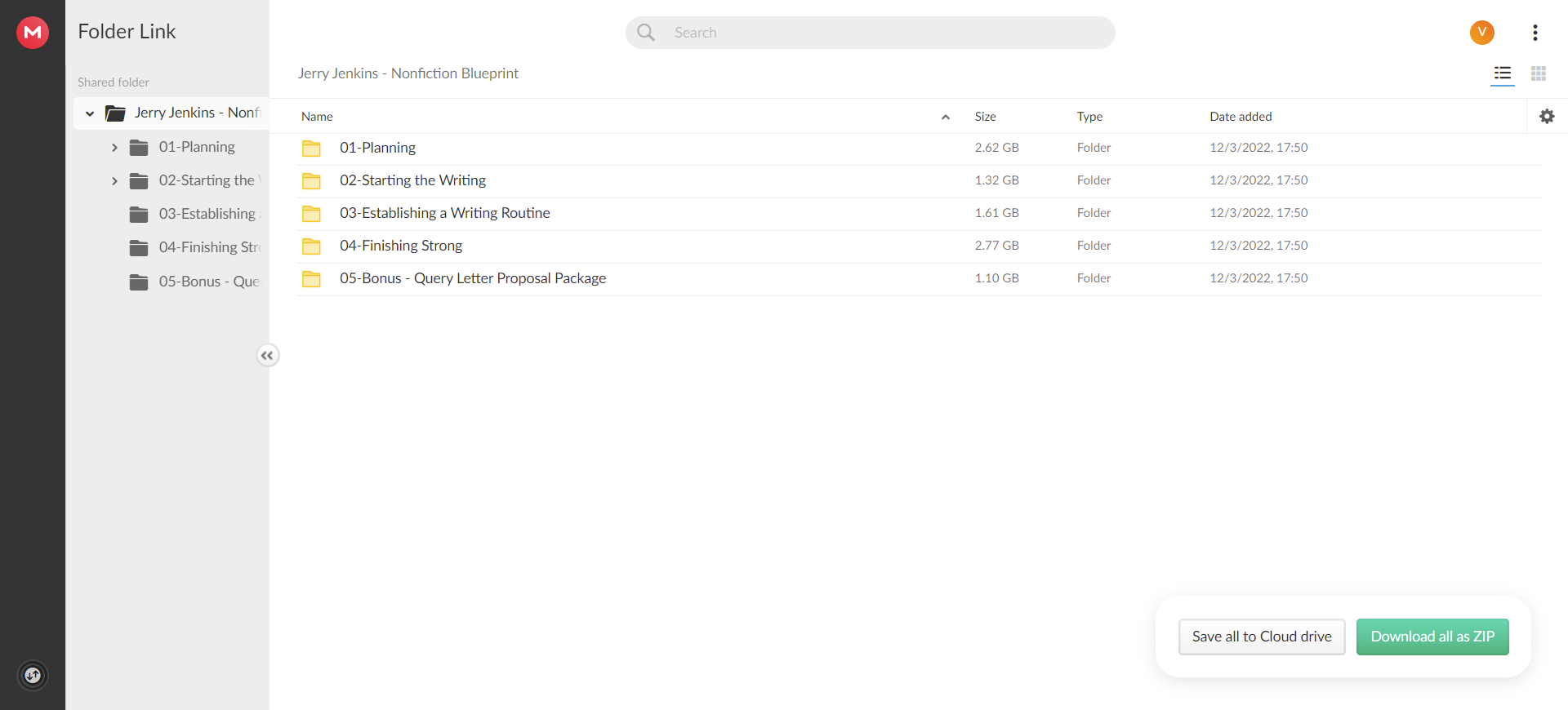
Jerry Jenkins – Nonfiction Blueprint
Proof of Download

What You Get Jerry Jenkins Nonfiction Blueprint:
PART I:
Laying the Foundation
In this section, I will help you avoid the following problems that are common among nonfiction writers: You name it: fear of failure, not knowing where to begin, hitting a brick wall after 30 pages or so. Consider how confident and motivated you’ll be after you’ve laid the necessary groundwork for your book.
You’ll learn the following:
- How to Create a Writing Schedule You Can Follow (and I will walk you through creating yours)
- How to find your unique writing voice within just minutes
- Why and how to create an outline before writing your nonfiction book? How to avoid coming off as preachy
- The classic structure that transformed my career decades ago (and that I’ve used to write everything I’ve written since — fiction and nonfiction)
- How to find a trove of powerful true stories to tell in your book How fiction techniques help your nonfiction book come to life
- How to Approach Agents and Publishers for Your Book
- Plus, much more!
And that’s just the first of four parts! See how much you need to know before writing to avoid getting stuck in the middle.
PART II:
Beginning the Writing
Here, we focus on your first page, where many nonfiction writers get stuck. We’ll finish yours to your satisfaction before moving on, so you’ll be motivated to keep going.
You’ll learn the following:
- My secret to building a powerful sense of accomplishment and momentum during your very first brief writing session
- Everything I know about writing an opener that hooks your reader from the first sentence
- Little-known techniques for crafting a killer first page (failing at this is the #1 reason manuscripts get rejected)
- How to become a ferocious self-editor — you’ll see actual hands-on revision in action, the kind countless writers have told me is their favourite, most immediately relevant training.
- And a lot more
PART III:
Establishing a Writing Routine
Here, I walk you through the first few chapters and share my best tips for forming habits that will last throughout the process.
You’ll also learn the following:
- 5 powerful ways to raise the stakes and craft high-energy scenes — just as important in nonfiction books as in novels
- The key to triggering the theatre of your reader’s mind — to so captivated him that he forgets he’s reading
- The crucial need to tell the hard truth in biographical writing
- The Author’s Golden Rule — which I advise you post where you’ll be reminded of it as you write
- And a lot more
PART IV:
Finishing Well
You’ll have confidently written roughly the first quarter of your manuscript and reached the Marathon of the Middle by the end of Nonfiction Blueprint. You must do more than get through the middle to finish strong. You must thrive there and keep things moving for the reader’s sake. I provide you with everything you need to complete the marathon and drive to the finish line.
As a result, Part IV is designed to take you to the end. That’s why I’ve sprinkled it with tonnes of advice and encouragement to help you get through some of your nonfiction book’s most difficult parts.
You’ll learn the following:
- How certain nonfiction books become phenomenons
- Secrets to keeping your reader hooked to the end
- The crucial role Theme plays in a nonfiction book.
- Encouraging reminders of why you started this journey and how to stay inspired until the last page
- 2 simple secrets to epic ending readers will remember Guidance forever through becoming happy with every word before you shop your manuscript to agents and publishers
By the end of this course, I hope you’ll have completed a nonfiction book you’re eager to submit.
Bonus:
The Query Letter and Proposal Package
When your manuscript is finished, you should pitch it to agents or publishers. As a result, I’ve included this bonus package as part of your membership so you can see exactly what I’d do in your situation.
What you get:
1. My tips sheet, How to Impress Agents and Publishers
This concise guide explains what each decision-maker looks for and how to make your work stand out. I also reveal 28 tweets from industry insiders to show you what they want — and what irritates them!
2. Access to two successful proposals you can use as templates
These were written for manuscripts that were later sold to publishers. Feel free to borrow their ideas and approaches for your own proposal.
3. My 90-minute seminar, How to Write Winning Queries & Proposals
This could save you hours of time and effort.
This training is based on everything I’ve learned in the industry over several decades, for which authors have paid thousands of dollars at writers’ conferences. If you’re serious about getting published, this will be extremely helpful.
By the end, you’ll understand:
- The difference between a query letter and a cover letter and when to send which
- How to write a captivating proposal
- The structure of my most effective book proposals
- How to create a pitch that’ll have agents and editors asking to see your manuscript
- And more!




